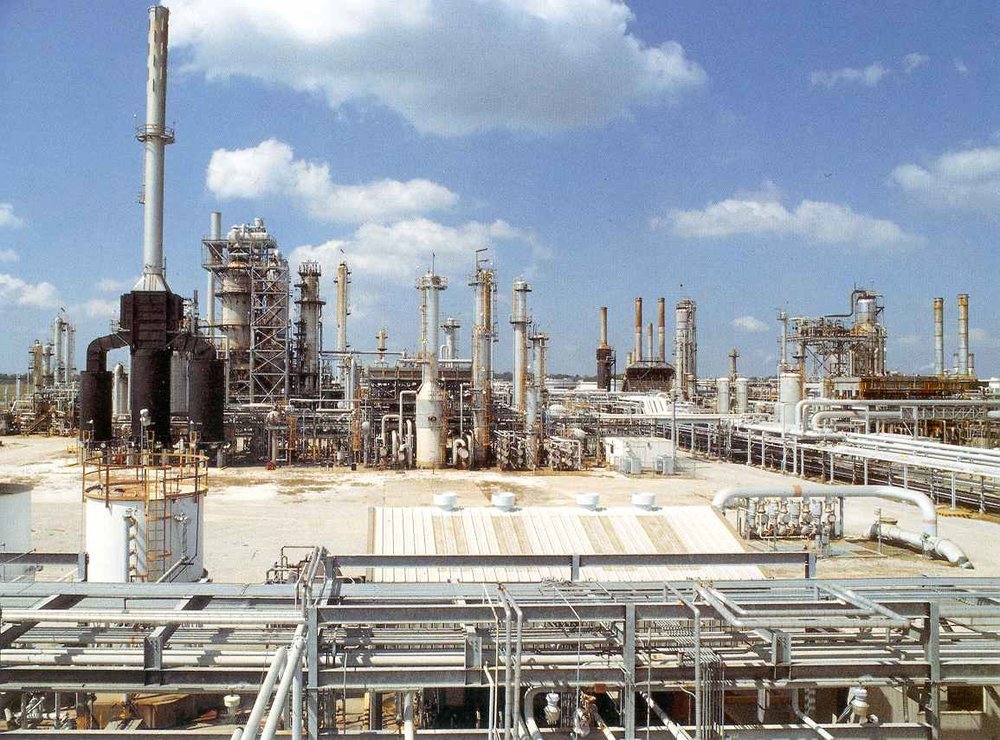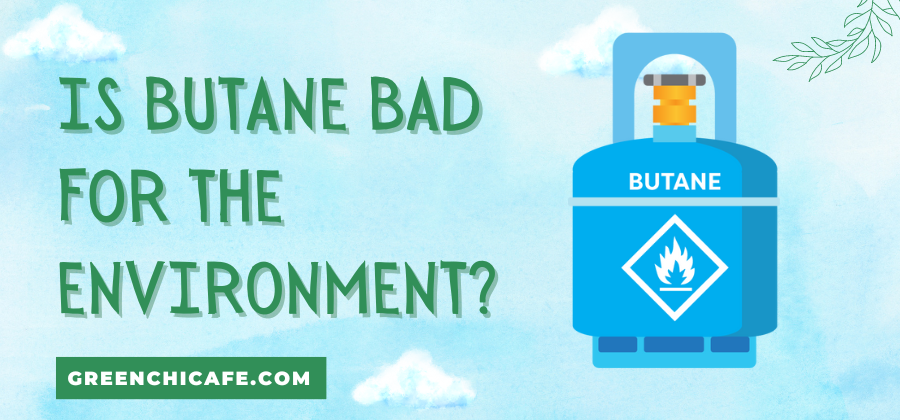Butane is a colorless, odorless gas used in fuel, aerosols, and refrigeration.
But with climate change accelerating, the environmental effects of extracted gases matter.
Does routinely using butane endanger the planet?
Is Butane Bad for the Environment?

No, butane itself does not directly harm the environment.
It is not a greenhouse gas or ozone depleter.
However, butane production and combustion does generate some harmful emissions that contribute to climate change.
Using butane efficiently as a transition fuel and developing renewable biobutane could improve sustainability.
Key Points
- Butane is considered a relatively clean-burning portable fuel source.
- Refining butane from fossil fuels produces air pollutants, but combustion emits minimal soot.
- Butane relies on limited natural gas reserves but has potential for renewable production.
How is butane produced and used?

Butane is derived from fossil fuel sources like natural gas and crude oil refining.
Most butane comes from natural gas processing.
Impurities are removed to yield pure butane for use as liquefied petroleum gas (LPG).
Butane’s portability and clean burning make it ideal for camping stoves and cylinders.
It is also used as a propellant in aerosol products and refrigerant.
The largest use of butane is as a blending component in vehicle fuels to improve combustion.
Global butane production reached over 70 million metric tons in 2021.
Is butane a greenhouse gas?
No, butane itself is not a greenhouse gas and does not deplete the ozone layer.
Small amounts of unburned butane can react in the atmosphere to form ground-level ozone, a harmful air pollutant.
But the Intergovernmental Panel on Climate Change does not list butane as a direct greenhouse gas.
Combustion of butane forms carbon dioxide and water vapor, both greenhouse gases.
But butane’s lifetime in the atmosphere is only a few months, minimizing climate impact.
Overall butane does not directly contribute to global warming.
Does butane cause air pollution?
Butane burns cleanly without soot or smog compared to other fuels.
But incomplete combustion releases some volatile organic compounds (VOCs) and nitrogen oxides (NOx), precursors to ground-level ozone formation.
Refining butane from crude oil or fracking does generate air pollutants.
But overall, butane itself has low reactivity and produces minimal pollutants when completely burned as a fuel.
Using butane as a propellant in spray cans does not harm the ozone layer.
For most applications, butane has relatively low air pollution impacts.
Is butane sustainable?
Butane is considered one of the more environmentally friendly non-renewable fossil fuel sources.
It has very low sulfur and aromatic content, producing less smog-forming byproducts when burned compared to gasoline or diesel.
But butane still depletes finite natural gas reserves and emits carbon dioxide when used.
Renewable biobutane derived from wastes may enable sustainable applications in the future.
But currently, butane depends on limited fossil fuel feedstocks.
Utilizing butane efficiently as a “transition” fuel balanced with renewables offers some sustainability benefits.
What are the risks of butane to human health?
Butane has relatively low toxicity, especially compared to other hydrocarbons like benzene or hexane.
Acute exposure can cause drowsiness and narcosis.
Chronic industrial exposure may affect the central nervous system.
Liquid butane can cause frostbite-like injuries.
The biggest risks result from leaks or mishandling that can lead to explosions.
Poor ventilation when using butane stoves indoors also poses a major asphyxiation hazard.
Following proper safety precautions when working with the compressed gas minimizes health risks.
Overall, butane has fewer health effects compared to many common solvents and fuels.
Does butane affect wildlife and ecosystems?
Small amounts of butane naturally occur in the environment from sources like volcanic gases and plant matter decay.
Butane exposure does not bioaccumulate in animals and plants like heavier hydrocarbons can.
Spills of liquified butane dissipate rapidly rather than persist in sediments.
Direct contact with cold liquid butane or high concentrations of vapor could injure organisms, but butane’s fleeting environmental presence limits chronic exposure risks.
Since it easily volatilizes and degrades, butane has minimal direct ecological effects.
However, climate impacts from butane’s greenhouse gas combustion products do affect ecosystems.
Are there any alternatives to butane fuel?
Sustainable alternatives to butane fuel include electricity, solar, and biogas.
Electric camp stoves and lamps avoid gas combustion entirely.
Home biogas digesters produce methane from food or agricultural wastes usable for cooking and lighting.
Solar lamps also provide zero-emission lighting.
Butane blend ratios can potentially be reduced by mixing with propane or renewable biobutane.
However, butane’s high energy density and portability make replacing it challenging in some instances.
The future of sustainable butane alternatives depends on technology innovations and responsible utilization.
Can butane ever be produced sustainably?
Butane production currently depends on nonrenewable natural gas reserves.
However, future potential sources for sustainable butane include landfill methane, agricultural waste fermentation, and algal biofuel processing.
These avenues can supplement fossil fuel sources and be carbon neutral through balancing emissions and sequestration.
Additionally, using renewable electricity in the butane refining process rather than coal or gas makes extraction greener.
But realizing truly sustainable butane remains a work in progress.
Are butane products better for the environment than aerosols?
Butane-propelled personal care or household products are marginally better than older chlorofluorocarbon aerosols in terms of ozone layer impacts.
However, butane aerosol propellants still produce greenhouse gases when manufactured.
Options like roll-on bottles or pump sprays avoid propellants entirely.
Consumer product sustainability ultimately depends on the full lifecycle impacts of ingredients, packaging, and usage alongside the propulsion method.
Butane offers a modest improvement for aerosols but does not make them universally eco-friendly.
Why is butane an environmental problem?
Butane itself does not directly cause environmental problems.
However, the production, transportation, and combustion of butane does contribute to issues like climate change, air pollution, and dependency on fossil fuel resources.
Extracting and refining butane from natural gas reserves requires energy and creates emissions.
Transportation of liquified butane also burns fuels emitting greenhouse gases.
While clean-burning, butane’s combustion produces carbon dioxide exacerbating global warming.
Widespread use of butane propagates reliance on nonrenewable natural gas.
Accidental butane leaks contribute to ozone formation.
Steps like optimizing efficiency, preventing leaks and accidents, transitioning to renewable biobutane, and using butane as a bridge to electrification could improve the sustainability of this common fuel source.
But currently, global butane usage reflects and magnifies environmental problems stemming from fossil fuel dependence.
Is butane considered a clean fuel?
Yes, butane is considered one of the cleanest-burning portable fuel options.
When completely combusted, butane emits negligible particulates, soot, and sulfur compared to fuels like gasoline, diesel, or coal.
This makes butane popular for applications like camping stoves.
However, butane combustion still produces carbon dioxide, nitrogen oxides, and water vapor emissions contributing to issues like climate change and acid rain.
Refining butane from crude oil or natural gas also generates pollutants.
While clean-burning, butane shares environmental issues common to most fossil fuel sources.
Shifting towards renewable electricity and biogas offers even cleaner fuel alternatives where possible.
Can butane be produced sustainably?
Currently, most butane comes from nonrenewable natural gas processing.
But future potential sources for sustainable biobutane production include:
Capturing methane emissions from landfills and agricultural manure
Fermenting agricultural or food wastes in biodigesters
Extracting butane from biofuels like algae-based diesel
Additionally, powering butane refining facilities with renewable energy rather than fossil fuels improves sustainability.
While most butane today depends on finite resources, innovations in bio-based production and renewable-powered processing could enable sustainable butane for essential applications in the future.
Key Takeaway:
- Butane provides benefits like clean-burning portable fuel but still requires fossil fuel inputs.
- Using butane efficiently, exploring renewable sources, and propelling innovation provides avenues for improving sustainability.
- Butane itself has relatively low toxicity and environmental impacts.
- However, climate and pollution consequences from production and combustion remain considerations for conscientious use of this commonplace gas.
FAQ
Is butane a VOC?
Yes, butane is considered a volatile organic compound (VOC) due to its high vapor pressure. VOCs contribute to ground-level ozone formation.
Is butane natural or man-made?
Small amounts of butane occur naturally from plant decay. But commercial and industrial butane is manufactured by refining fossil fuel sources like natural gas.
Can butane explode?
Yes, butane is highly flammable and vapor buildup creates explosion hazards if ignited in an enclosed space. Proper handling precautions are crucial.
The writers at GreenChiCafe are passionate about the environment and our natural world.
Please check out our website for more great content on living sustainably.
